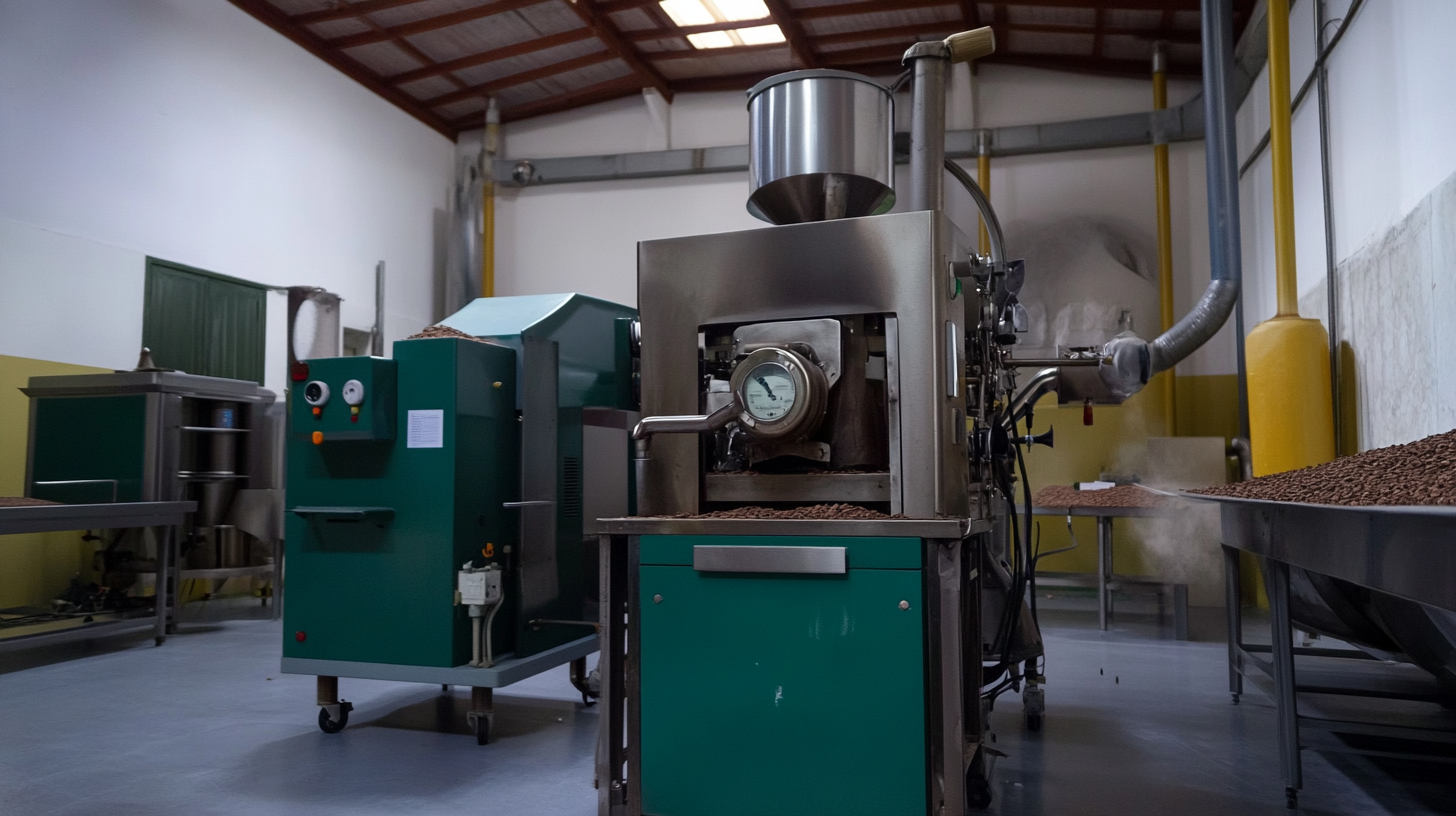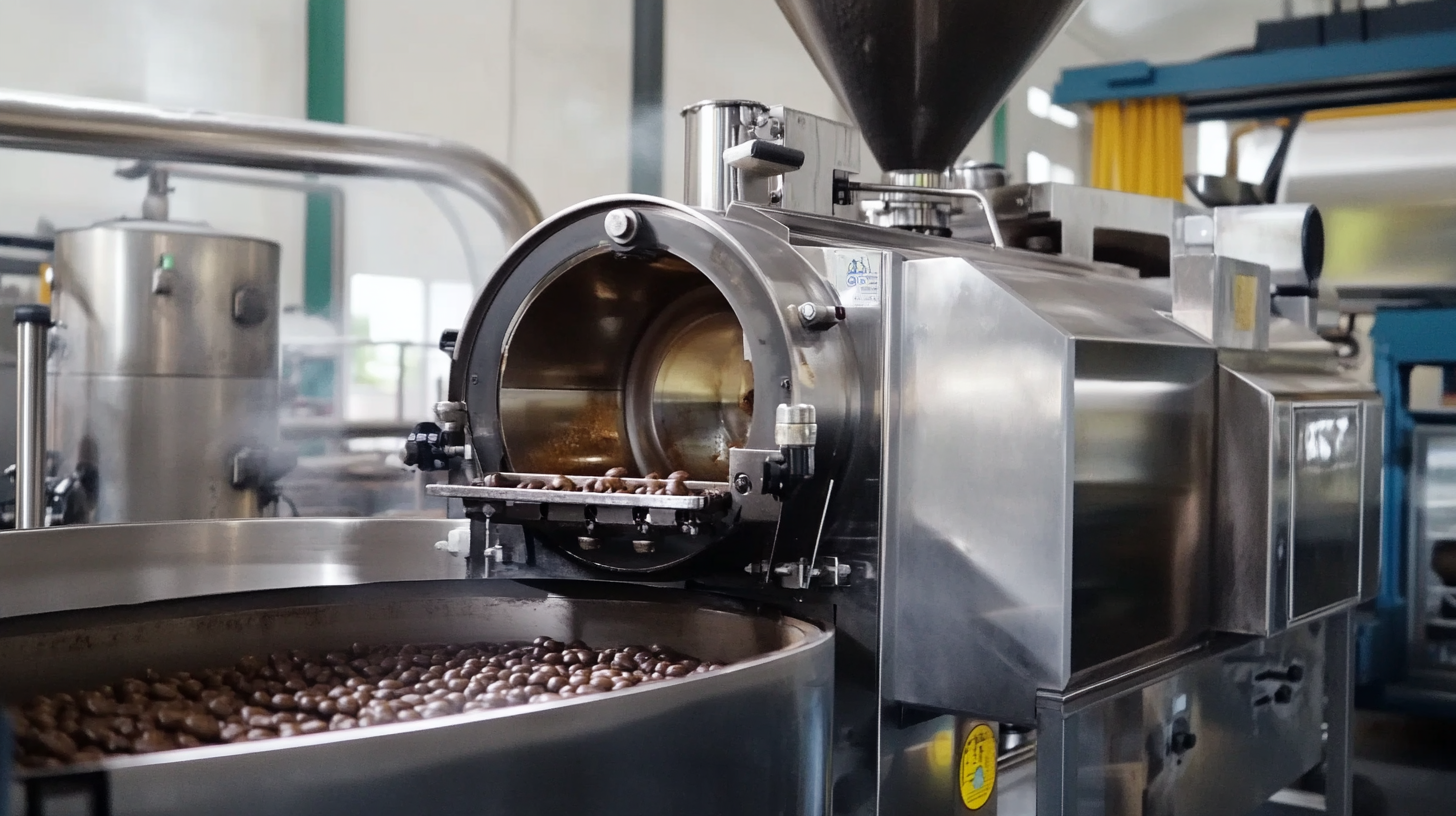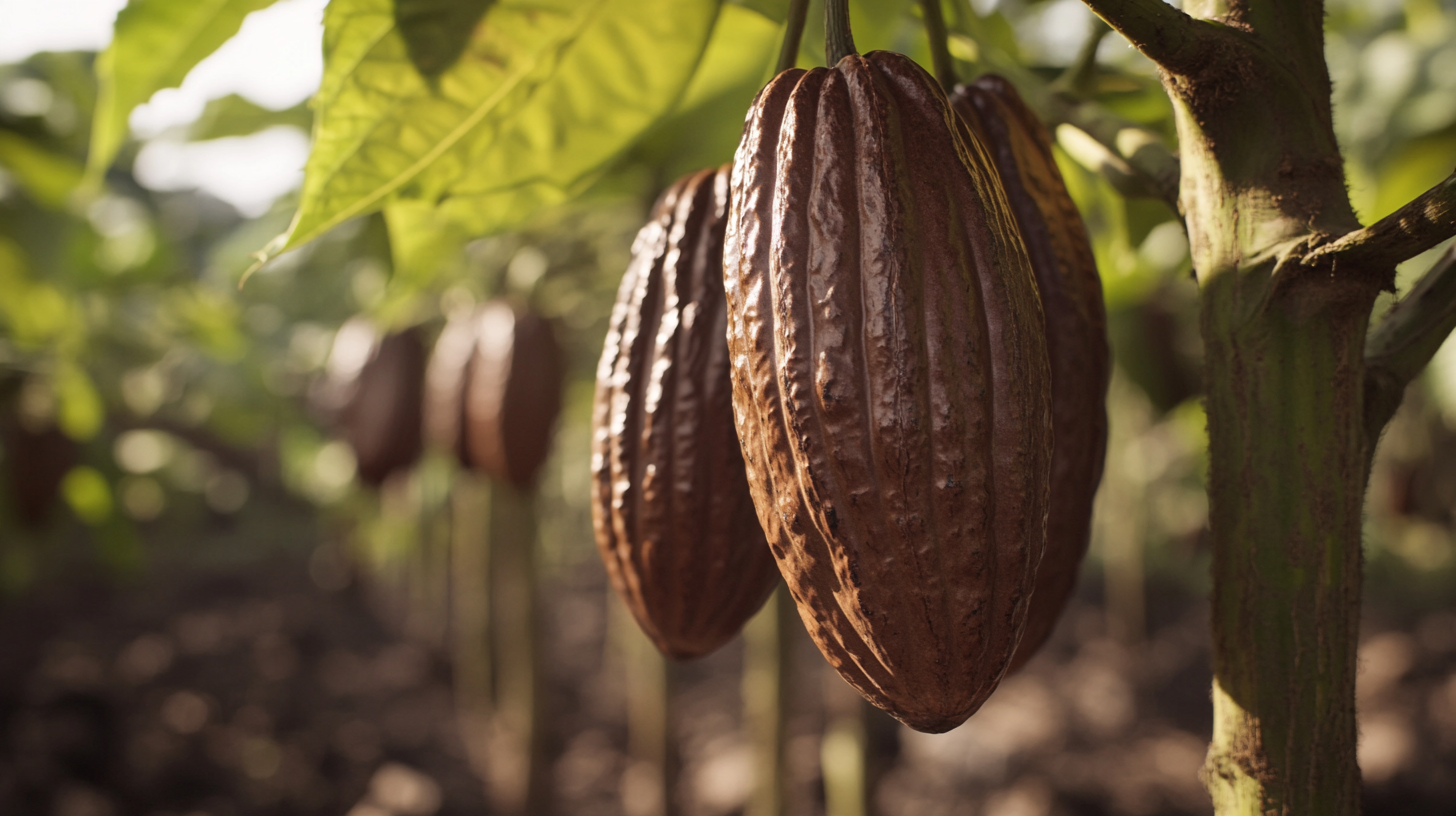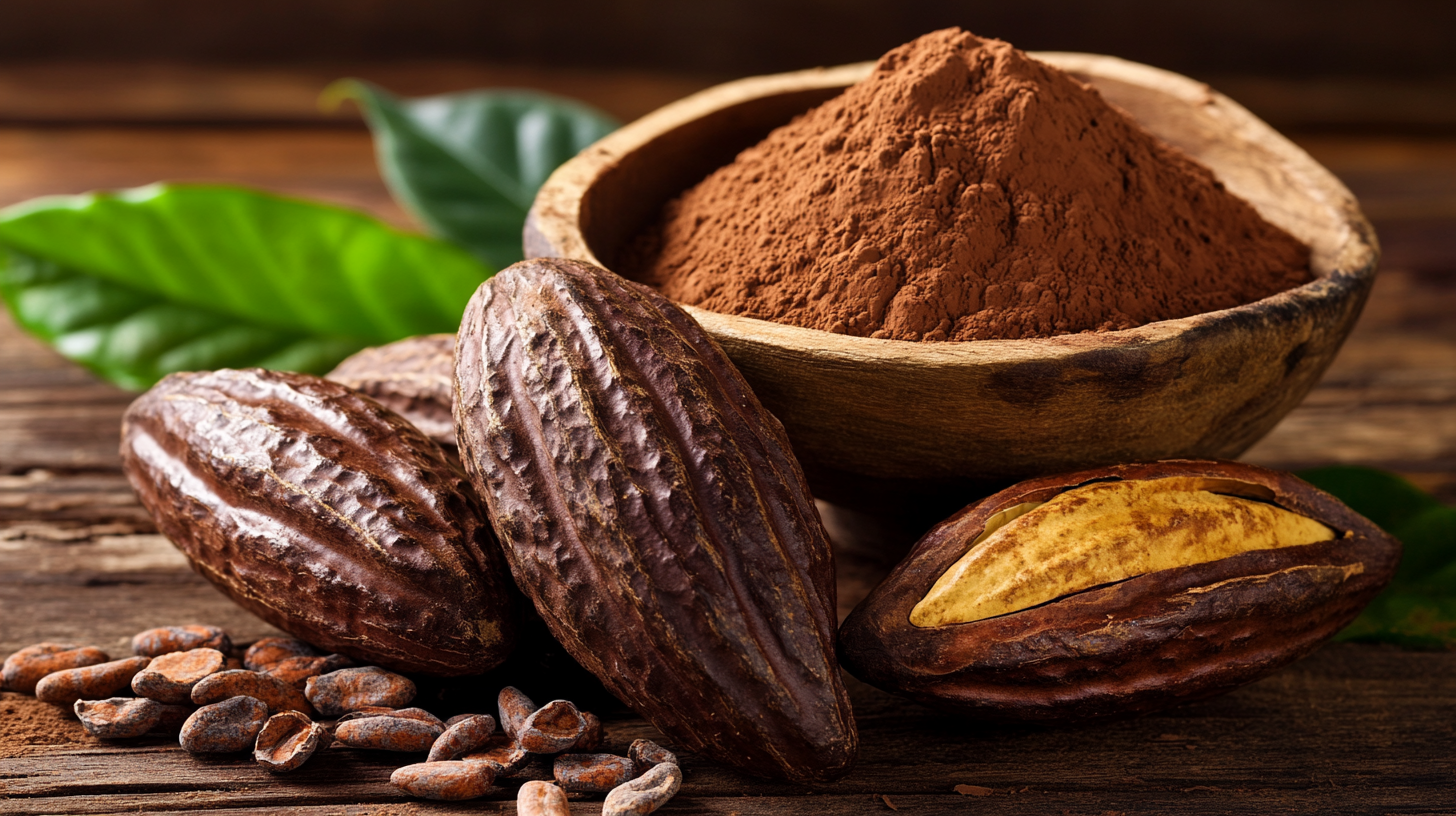Tips for Sourcing Quality Cocoa Roasting Machines in a Competitive Global Market
In the changing and ever-improving chocolate-making industry, proper and best equipment that could produce superior flavor profiles with products is what makes them maintain their competitive edge. Among the different machinery involved in producing chocolates, Cocoa Roasting Machine is one that really matters when it comes to the cocoa quality. This machine is of great significance to the process because it directly influences the procedure of roasting, which marks the act of bringing out the flavor and tantalizing aroma cooks love in their chocolate. However, getting one that is up to standard and one that fits your pocket values would not come easy.
As the chocolate market globally continues to expand, manufacturers must overcome hurdles to deliver their products consistently and most excellently. This, therefore, requires a strategic approach to the sourcing of cocoa-roasting machines that could effectively become operational needs besides meeting prevalent industry practices. This post discusses essential considerations when approaching the very crowded cocoa-roasting business. By use of quality, performance, and long-term reliability in their choice, companies will have made best decisions on how to improve their production efficiency while at the same time ensuring competitive advantage in the chocolate marketplace.

Identifying Key Features of High-Quality Cocoa Roasting Machines
If you are a buyer for quality cocoa roasting machinery as a source for the equipment today cost-effective in a highly competitive global market, it would be wise to look for the great features that classify high-quality ones from their mediocre counterparts. One of the most important features is roasting technology. Advanced roasting machines use heat directly, with convection current variations in both applications, ensuring an even roast and depth in flavor profile development. When digitalized controlled machines are available in the market, users need to be more careful with temperature gradients because everything needs to be a little exact for them to develop their desired roast levels. Then pick-up features the construction and material quality, in general, of all that engenders high-caliber cocoa roasting machines-they do make use of long-lasting, food-safe materials that live up to the high temperatures and rough uses. Most more-so specify stainless steel, because it serves lengthening the life of the roasting machine, while as well keeping basic measures that make it very easy to clean and maintain regarding hygiene levels. Apart from that, consider the capacity and versatility of the machine. Depending on the size of production, you should select a cocoa roaster that satisfies your volume requirements without foregoing quality. It is also beneficial to adjust drum speed and air flow to provide greater flexibility with the roasting process, thus allowing experimentation with different cocoa varieties and varieties of roasting profiles. With these, it will be easier selecting a machine that is not only compliant with the local industry but also customized to local production needs.

Evaluating Suppliers: How to Choose Reliable Manufacturers in the Market
And here your full original text:
Choosing well reliable manufacturers who meet quality and efficiency standards is, therefore, paramount during supplier evaluation for cocoa roasters in an increasingly competitive global market. Grand View Research's recent market analysis gives projections of the global cocoa processing market to hit $13.57 billion by 2025, indicating the increasingly rising demand for high-quality roasting equipment. It emphasizes the need for suppliers who are time-tested as well as innovative in terms of technology and processes.
One major parameter to check while evaluating a manufacturer is whether the company conforms to international quality standards such as the ISO certifications. For example, manufacturers that have ISO 9001 certification show quality management practice adherence that can go a long way in reducing machine failure and operational inefficiencies. Furthermore, the current statistics from Statista show that 30 percent of cocoa processing companies attach importance to reliable suppliers and quality as they make procurement decisions. It means that reliable partnerships can lead to more effective operations and better results for cocoa producers.
Further, thorough research into the manufacturer's track record in the industry is crucial. Check through their customer reviews and case studies, judging by their performance record. Suppliers with a long experience working in the cocoa industry most likely will understand what the manufacturers specifically need; therefore they can address that. By using industry reports and performing comprehensive evaluations, firms will be able to position themselves strategically in sourcing cocoa roasting machines to improve production quality while remaining competitive in the rapidly evolving market.

Understanding Certification Standards for Cocoa Roasting Equipment
Therefore, to buy cocoa roasting machines, one of the most essential features that the buyers should consider is that of the standard certifications. This ensures that the machines comply with the regulatory requirements of safety, efficiency, and quality. Some of the most well-known certifications in the cocoa industry include ISO, CE, and UL, serving different markets and making various kinds of compliance measures possible. Knowledge of these certifications enables buyers to avoid purchasing substandard machinery that compromises their production quality.
Specifically, ISO certification assures that the cocoa roasting machine is in line with international quality management standards, thus reassuring buyers that it follows a consistent process by the manufacturer in producing a product with high quality. Likewise, CE marking is focused on the fact that equipment has met certain health, safety, and environmental criteria in Europe. In contrast, UL certifies companies with intentions of deriving income from the North American market that the equipment has been tested for safety hazards.
Owning machinery that is certified will efficiency in operations besides embracing local regulations. It becomes extremely crucial for global market entrants where noncompliance results either in ruinous cost penalties or damage to the reputation of the name. Cocoa roasting machines, therefore, setting a focus on certified equipment assures quality standards while putting the organizations in a patently competitive sphere.

Comparative Analysis: New vs. Used Cocoa Roasting Machines
Considerations in new cocoa roasting machines vs. used ones should preferably encompass both technological advancement and economic implications for either option within the realm of a competitive global market palette. Such analyses generally reveal that newer machines are rich in novel energy-efficient and roasting-profile-consistency technologies, with intense relevance to any high-quality cocoa-conscious consumer. The most recent developments foresee that the modern roasting technology is setting a new trend in favor of small businesses, operating at scale with sustainability features.
In the coffee sector, innovations like electric roasting technology underscore the move towards eco-consciousness that cocoa roasting might consider imitating. New machines further increase product quality by enhancing precise temperature control and automating roasting profiles for better flavor development. Programs show a positive outlook for companies investing in advanced roasting technology to enjoy payback through superior product quality and reduced running costs.
Used cocoa roasting machines are appealing to smaller operations or startups as an initial investment. While perhaps not boasting the newest technology, many used machines can still provide consistent results when properly maintained and cared for. For firms trying to make an entry in the market, this option allows for lower initial capital expenditures while gradual upgrades can be allowed as the operation grows. However, proper scrutiny should be paid to the state and history of used equipment to prevent expensive repairs down the road. The balancing act between low-cost suppliers and acceptable quality has contributed to the ongoing debate over sourcing strategies for cocoa roasting.
Exploring Innovative Technologies in Cocoa Roasting for Enhanced Quality
The roasting, in fact, plays host at all levels to the chocolate product that has been coming up in the ever-evolving cocoa industry. The new technologies in cocoa roasting redefine how producers carry out this most critical step in their operations in order to give the best possible outcome that they would expect. Integrated equipment and techniques make firms understand their cocoa quality and, subsequently, their overall products while marketing them globally in a very competitive price environment.
Most outstanding is the technology where roastings are computer controlled to offer precise timings and temperatures, thus leading to more consistent processing of roasts. Such level of precision further urges producers to do different profiles experimentation for varying flavor notes. Besides, some newer machines are fitted with state-of-the-art cooling systems for fast cooling the beans immediately after roasting to minimize post-roasting over roasting while holding on to complex flavors acquired during the oil extraction process.
In addition, the latest cocoa roasting machines adopt energy-efficient technologies that literally save them from a huge carbon footprint. These environmental advances have not only made these machines fit perfectly with the world's sustainability goals but have also entered the conscience of consumers. So as not to fall from the great catch in the future, roast investment ensures improved product quality and a sustainable future for chocolate.
